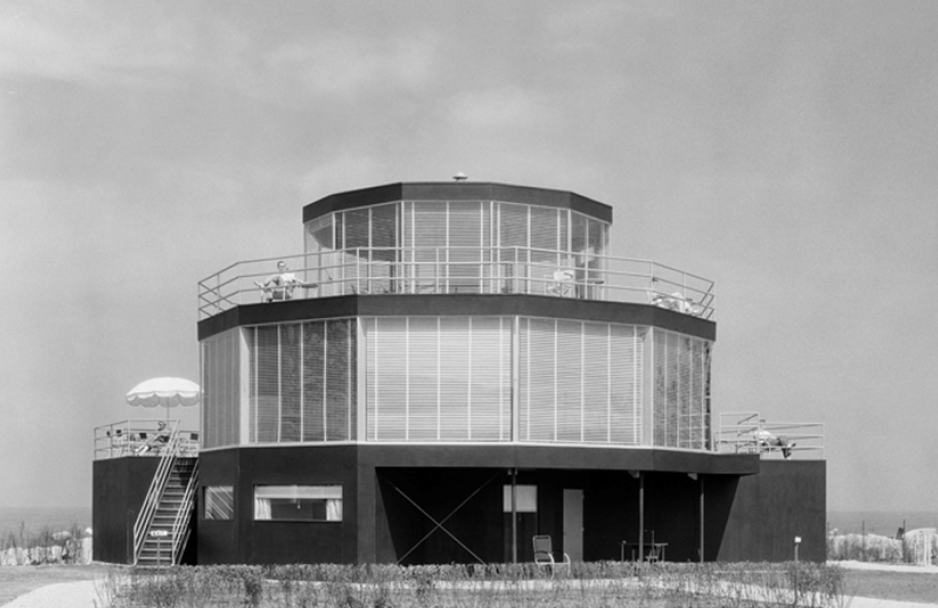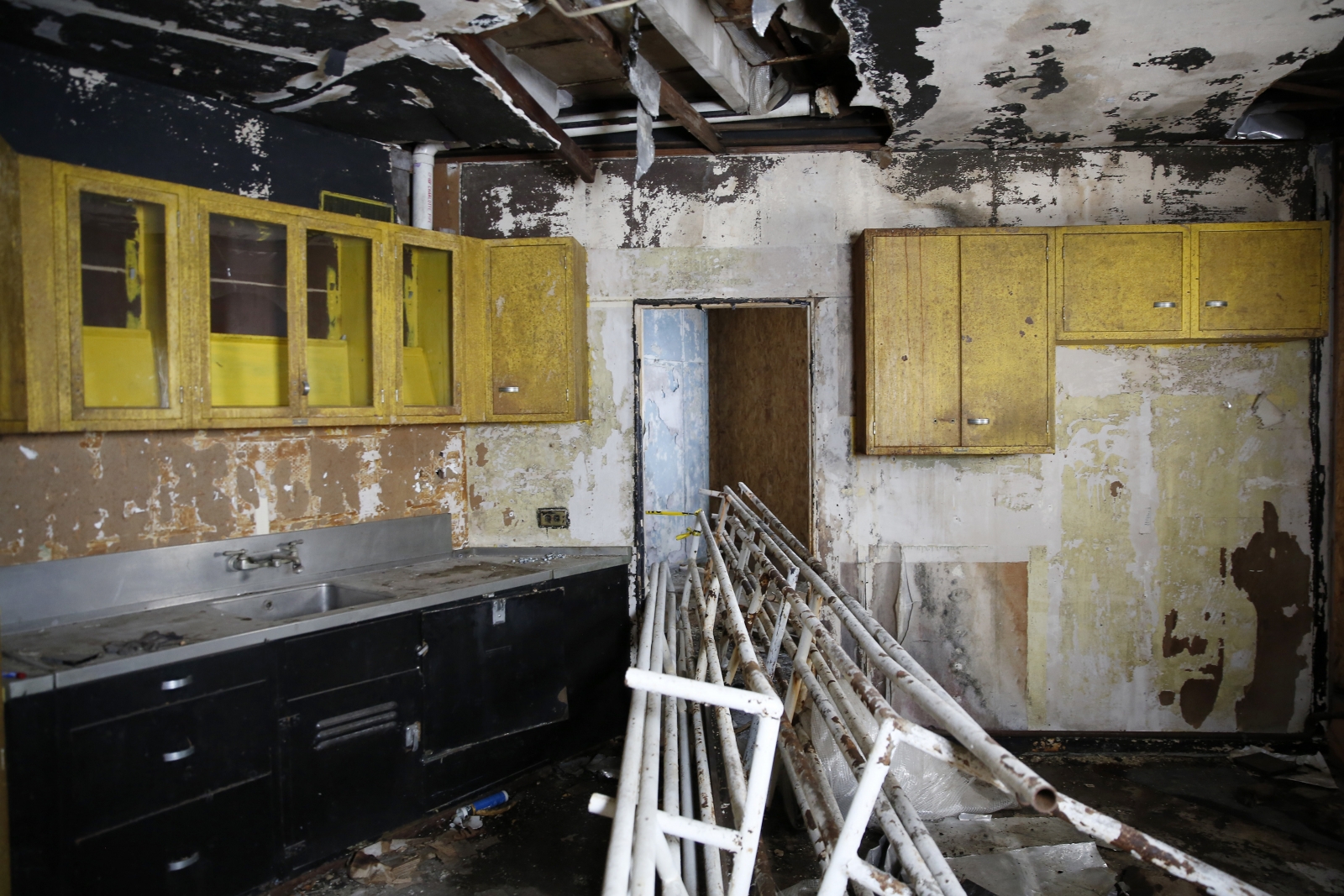In 1933, architect George Fred Keck built a glass house to showcase the future of residential architecture at the 1933 Chicago World's Fair — and soon, that same home will undergo a massive overhaul to prepare it for new residents.
Known as the “House of Tomorrow,” the polygonal structure was designed for the fair's "Century of Progress" theme, which highlighted new industrial advancements and technologies.
Keck, along with his brother William, would later become prolific residential designers around Chicago. And while glass houses by the likes of Philip Johnson and Mies van der Rohe are better remembered, it was Keck's House of Tomorrow that helped usher in a new residential design language in the mid-20th century.
The ten-sided glass house was strikingly modern for its day, packed with then-advanced features like central air, a dishwasher, and an automatic garage door.
After the fair, the house and five others were sold to a developer, Robert Bartlett. He moved them across the lake by barge to Beverly Shores, Indiana, where he hoped to establish a resort community. But the Depression threw a wrench in his plans, and the resort never flourished. The empty Century of Progress homes fell into disrepair, and in the 1960s, the National Park Service acquired them in its push to develop the Indian Dunes National Lakeshore.

It wasn't until the 1990s that the preservation group Indiana Landmarks got involved in funding efforts to salvage the World's Fair Homes. The group has already restored four other homes from the Century of Progress, but the House of Tomorrow is next in line.
They've executed the restorations through a unique public-private partnership. Indiana Landmarks leases the homes from the National Park Service, then sub-leases the properties to private citizens who fund the repairs. In return, folks get to live in the historical homes — and in the Indiana Dunes. The arrangement has been a success so far, says Indiana Landmarks northern region director Todd Zeiger.
“We’ve found individuals who not only have a passion for restoring historic homes, but ones who have a particular affinity for the World’s Fair homes,” Zieger says. “Living where the homes are at, it's an interesting location as well as a unique opportunity to play a part in American architectural history.
"I'm not aware of any other organizations doing a public-private lease where the leasee is covering the cost of renovations," he continues. "We think it's a model that other national parks could utilize for preserving and restoring historic resources."

Zieger estimates it will cost around $3 million to overhaul the House of Tomorrow. Indiana Landmarks has covered the cost of preliminary design work, planning, and permitting. The final step is securing a lease with a private resident or tenant organization; Zieger says they're in advanced negotiations to that end.
Chicago’s bKL Architecture, a firm known mainly for its skyscrapers, is the lead architect for the project. While bKL plans to respect and protect the House of Tomorrow's history, the firm's main goal is to bring the home up to code, says founding principal Tom Kerwin.
“We have been leading a team of consultants to prepare drawings to restore this house to its former glory, but taking it even beyond,” says Kerwin. “It was the house of tomorrow in the 1930s, but returning it to that state wouldn’t make it the house of tomorrow today. For instance, the windows were single glazed, making it very difficult to cool during hot days.”
It didn’t take long for the firm to make changes to the home's inefficiencies, says project architect Charlie Hasbrook.
“The solar heat gain was so much that they had to close half of the house during the World’s Fair,” Hasbrook says. “The striking images you see were taken in 1933, and by 1934, they had already altered the house with double-hung Chicago windows and it didn’t look like it was supposed to.”
Hasbrook says the intent of the renovation is to revive the house’s original appearance while utilizing contemporary building materials and systems to ensure better livability.
Meanwhile, permitting and approvals have moved along. After two years of planning and design work, renovations could begin on the house in as soon as a couple of months, preparing the House of Tomorrow for today.


